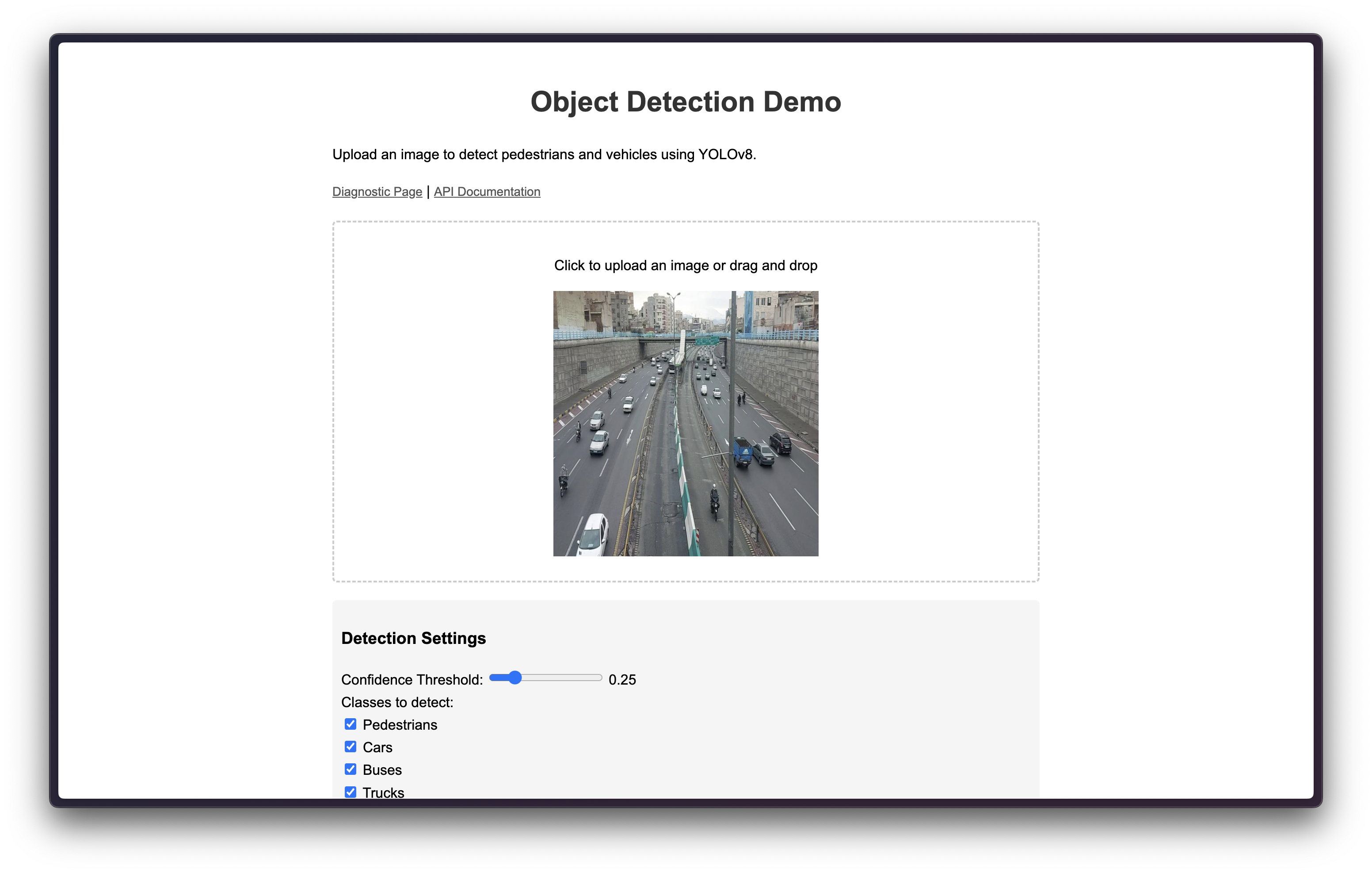

Computer Vision Object Detection System
Brief
A computer vision system that implements YOLOv8-based object detection for identifying pedestrians and vehicles in images. The system is deployed as a FastAPI web service, containerized with Docker for easy deployment and scalability.
This project addresses the need for reliable object detection in autonomous systems, providing a balance between performance and accuracy for real-time applications. The system is designed with a focus on practical deployment considerations and ease of integration.
My Contribution
As the developer of this project, I designed and implemented:
- Integration of the YOLOv8 model fine-tuned for detecting pedestrians and vehicles with optimized inference settings
- A FastAPI web service with RESTful endpoints for image upload, detection, and result retrieval
- Docker containerization for consistent deployment across different environments
- A modular codebase architecture with separation of concerns and clean interfaces
- Comprehensive documentation and testing utilities to ensure reliability
System Architecture
The system follows a modular architecture with distinct components:
- API Layer: FastAPI application providing RESTful endpoints for client interaction
- Model Handler: YOLOv8 model integration with pre and post-processing pipelines
- Storage System: Efficient management of uploaded images and detection results
- Deployment Layer: Docker containerization for consistent cross-platform deployment
- Utility Services: Supporting components for logging, error handling, and diagnostics
Key Features
State-of-the-Art Object Detection
Utilizes YOLOv8, one of the most efficient and accurate object detection models available, configured specifically for detecting pedestrians, cars, buses, and trucks with high precision and recall rates even in challenging conditions.
API-First Design
Built with an API-first approach using FastAPI, providing intuitive and well-documented endpoints for easy integration into other systems. The API includes Swagger documentation, request validation, and proper error handling.
Containerized Deployment
Packaged with Docker for consistent deployment across development, testing, and production environments. The containerization handles all dependencies, including CUDA support for GPU acceleration when available.
Production-Ready Implementation
Designed with real-world deployment considerations including error handling, proper logging, performance optimizations, and security best practices, making it suitable for production environments.
Technical Challenges
Developing this object detection system presented several complex challenges:
- Balancing Performance and Accuracy: Finding the optimal configuration for YOLOv8 to maintain high detection accuracy while ensuring acceptable inference speeds on various hardware configurations
- Memory Management: Handling potentially large image files and ensuring efficient processing without excessive memory consumption, especially in containerized environments
- API Design: Creating an intuitive yet powerful API that accommodates various detection parameters while maintaining simplicity for common use cases
- Containerization: Building an efficient Docker container that supports both CPU and GPU inference while keeping the image size manageable
Takeaways
This project provided valuable insights into deploying machine learning models in production environments. I gained experience in optimizing deep learning models for real-world applications where factors beyond accuracy, such as inference speed and resource utilization, are critical considerations.
The process of designing a clean API for ML model inference taught me best practices in creating interfaces that abstract complexity while providing sufficient flexibility. The containerization experience highlighted the importance of environment consistency across the development lifecycle.
Working with YOLOv8 deepened my understanding of object detection architectures and the practical considerations in tuning these models for specific detection tasks, knowledge that can be applied across a range of computer vision applications.